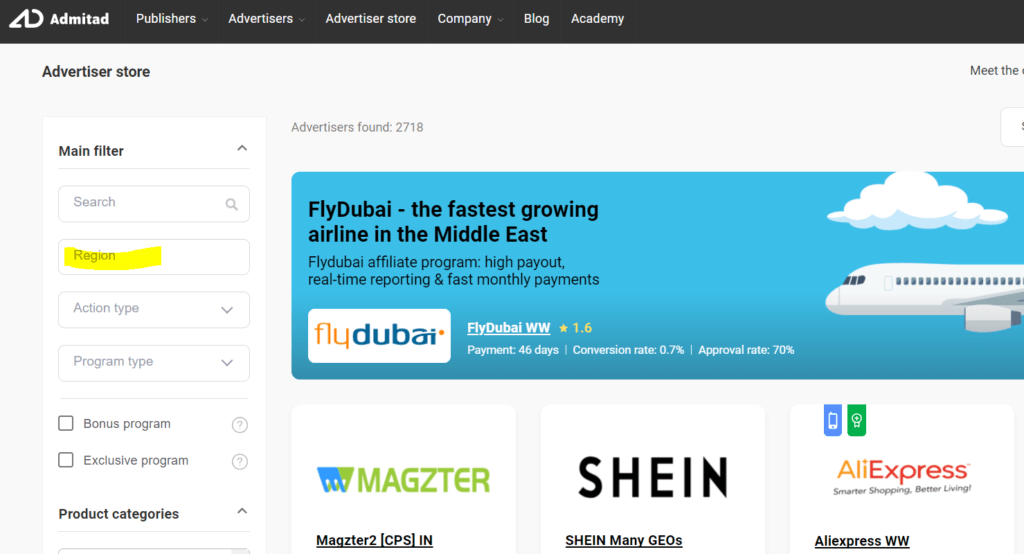How and why you need to set up global SEO

Global SEO is a way to let search engines know for which users of a country your website’s content is intended and make it as relevant and convenient as possible for users worldwide.
Configuring SEO settings may be tricky. We hope you have a basic understanding of what search engine optimization is and how it works because now, we’re going to dive deeper into the world of global SEO.
We have a detailed configuration guide for you that contains basic tips (e.g., content optimization, keyword collection) and recommendations for advanced users (such as setting up URL addresses and language tags).
Who needs global SEO, and why
Global SEO comes in handy for those who work with content, products, and services in regions where people speak different languages.
Let’s take, for example, a publisher who runs an online store that offers products for Russian users, as well as a line for German and Spanish users. The online store is just one example of such a website. It could also be a landing page, blog, affiliate store, or forum.

Here’s a tip for those who work with affiliate networks: in the affiliate program catalog search filter (on the left), you can select the region where the program operates.
Obviously, the publisher needs to create three versions of the website: one for Russian, one for German, and one for Spanish. These websites are called multilingual and multiregional because they are intended for people who speak different languages and live in different countries. One could rightfully say that this website has several locales.
The Academy’s website is a perfect example of this. You may have noticed the language menu in the top-right corner.

Content on multilingual websites may or may not be the same in different languages. For instance, if you sell products in several European countries, you can simply translate your content. If your focus areas are, say, Russia and China, you’ll need to localize the content.
Why? Because citizens of these two countries differ in their mentalities, needs, and habits, which means they even perceive UX differently. That’s why literal translation won’t do in this case.
Here’s another example. An e-commerce entrepreneur lives in Russia but decides to sell products in Spain (for example, castanets). She’ll need to configure SEO so that search engines recognize that the content is intended for Spanish-speaking users.
Again, global SEO is a process of optimizing a website for various countries and languages and, therefore, users from those countries and who speak those languages. These settings will help you attract targeted organic traffic from several regions and people who speak different languages.
Global SEO offers convenience and value for users and traffic for publishers.
On the other side of the coin from global SEO is local SEO. Local SEO is the process by which you focus on local search traffic, with as specific a location as possible, i.e., hyperlocal. A good example is when you promote a local coffee shop. Not only does local SEO focus on a specific region; it also aims for queries like “near me.”
Most of the tips you’ll find in this text work for area-specific SEO (a process in which you optimize a website for a certain region within one country). This is also crucial, especially for countries with numerous and diverse areas that have different languages, religions, and traditions. Russia’s a great example of this.
How to set up global SEO
Important! Before configuring global SEO, do some market research and make sure the products you’re selling are in demand in the regions where you plan on selling them.
Here are a few good tips for doing that. First, evaluate the competition in your vertical. Next, consider the laws in the region where you’re going to operate (for example, some jurisdictions don’t allow advertisements for online casinos), and familiarize yourself with local user personal data protection policies. After that, analyze the specifics of the region’s target audience: how do people make purchases, which local search engines and social media do they use, what issues are they trying to address.
International URLs
There are several URL and website structure options that work well for global SEO.
- ccTLD, or country code top-level domain. It’s .ru for Russia, .it for Italy, and .de for Germany. Two-letter domains indicate the country for which a website’s content is intended. If you live in Russia but sell products in Spain, go with .es.
ccTLD may be costly, but it delivers good CTR.
Another option is gTLDs—global top-level domains (e.g., .com, .me, and .org). - Subdomain. A subdomain indicator is added to the name of the main website and is placed before it. For instance, if a website address is admitad.com, the address of the Spanish-subdomain website version will look like es.admitad.com.
- Subdirectory. It’s easier and cheaper to integrate this option into the root website than it is for a subdomain. The downside here, however, is that search indexing is less powerful. Here’s what it looks like: admitad.com/es.
If you target countries with several language groups, you may want to specify the language and region in the URL. This may work well if you sell products for English-speaking and French-speaking users in Canada. Addresses may look like admitad.com/ca-en or admitad.com/ca-fr (region followed by the language).
Pro Tip. If your website has a country code top-level domain, do not use subdomains or subdirectories. They’ll work better for gTLD. For example, URLs like es.admitad.ru or admitad.ru/es may confuse both search engines and users. Besides, addresses like es.admitad.com and admitad.com/es just look way better.
You can also create a generic domain and complement it with language parameters (e.g., admitad.com?lang=ru). However, experts don’t recommend doing this because such websites index poorly and have geotargeting limitations.
Subdomains and subdirectories are created in the hosting control panel or website CMS. Every service has its own instructions. Just Google them.
Content for various languages and geos
We have already mentioned how important it is to not just translate content but to localize it to the mentality and lifestyle of users from different countries and regions.
We at the Academy publish articles in our Popular Programs series every month. The articles for Russian speakers differ from the ones for English-speaking users. We rotate news events depending on their relevance by country. For instance, Father’s Day is widely celebrated in June in the US and Europe, but it’s not such a big holiday in Russia. Because of that, we only mention Father’s Day in the English version.
People in different countries and regions perceive things in different ways, such as colors, humor, and numbers (take the number 13, which is seen as bad luck in some countries but loved in China).
If you localize one locale’s article to a different region, don’t forget to replace illustrations and links so that every piece of content is native to the user. For example, in the Russian version of the article devoted to setting up Facebook ads, we used images from the Russian version of the social network. For geos outside of Russia, we used screenshots from the English-language interface:
Pay attention to the interface elements of the website versions created for different locales. Each locale’s time zone must be configured correctly; prices should be displayed in the local currency; and contact info and auxiliary pages (e.g., About Us, How to Become an Author, and the Privacy Policy) should be provided in the locale’s language.
Devote time to collecting keywords for every locale. The semantic kernel is a crucial SEO—and global SEO—tool. Not only do you have to translate keywords into languages for various locales, but you also have to compile a unique semantic kernel for every geo.
It is imperative that you understand the context of thinking in a certain locale and know some specific local words, such as slang or jargon. A simple example is the difference in how English speakers from different countries understand the words “soccer” and “football”.
Pro Tip. Always check queries and trends for various locales using Google Trends, SemRush, and similar tools.
Language and geotargeting
Let’s go back to the example of a publisher selling castanets in Spain. This publisher is interested both in Spanish citizens and Spaniards living in other countries. Apparently, they miss their motherland and would be happy to have something so close to their heart. They can be reached using language-based targeting.
To tell a search engine which users you target (by language), you can use HTML and language tags. In other words, the code fragment will indicate which languages you use on the website.
For instance, the
<Hreflang> can specify both the language and the region. For instance, the <hreflang=”en-us”> tag indicates that the page is designed for English-speaking users from the US.
To specify the page language for a search engine, use the lang attribute for the <html> tag. For example, <html lang=”ru”>.
Google offers a bunch of other geo and language targeting tips. Make use of Help to learn how to explain to a search engine that your website targets different locales and languages. Pay special attention to sitemap; we haven’t mentioned it in this article.
What else you can do
- Do not use machine translation for your content. Search engines easily detect poor-quality translations and thus lower the page rank. On top of that, users probably won’t like jumbled texts composed by a bot.
Pro Tip. You can block access to machine-translated pages for search engines using the file robots.txt. - Pay attention to the redirect based on the expected language. The system sometimes makes mistakes, identifies a wrong IP, or redirects a user to a wrong locale. This may irritate users and confuse search engines. To avoid that, you may want to disable such redirects in your CMS’s plugins. For instance, WordPress-powered CMS Polylang offers the “Detect browser language” option.

- Make sure the language switch is available in the same place on each page.
- You can host your website on your target country’s IP. That kind of integration will also help search engines index you better. Read this to learn how to do that.
- Do some link building. If you have a slew of backlinks in one geo, they won’t work for a different locale or language because different markets have different trust resources. You can find more info about link building here.
We wish you all the best in the global market!









